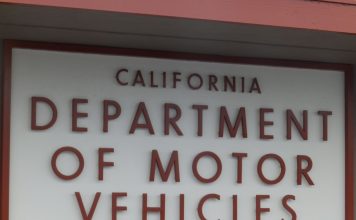The Valley Transportation Agency is in dire financial straits
and is making all the wrong moves to steer itself toward fiscal
solvency.
The Valley Transportation Agency is in dire financial straits and is making all the wrong moves to steer itself toward fiscal solvency.
The agency faces staggering annual operating deficits. It has repeatedly cut bus and rail service – the very reason it exists – in recent years. The agency has also increased fares multiple times.
Additional fare increases and further service cuts are said to be likely. But they’re not enough, we’re told. The VTA is reeling from a drop in sales tax revenues due to the economic downturn, it reports.
The VTA board of directors has come up with three ideas to fix its fiscal woes.
The first two ideas are tax increases: either asking voters – who are grappling with the same financial uncertainties that their governments are – to approve a sales tax increase; or imposing a payroll tax on businesses – which are also feeling the pinch of tight economic times – of one-half to 1 percent.
To put it bluntly, both those ideas stink. California taxpayers already shoulder a huge tax burden, while facing high cost of living and uncertain job markets. They’re likely to be paying more in taxes to bail the state out of its $35-billion budget hole. Taxpayers don’t need to be burdened further.
And neither do businesses. Jobs – especially in hard-hit Silicon Valley – are already scarce enough. But lost jobs are just what industry lobbyists predict if the payroll tax they say could cost businesses $1,000 per employee is approved.
The third plan, proposed by County Supervisor Don Gage, is to borrow against expected Measure A sales tax revenues to pay for existing operations. The one-half cent sales tax, set to begin in 2006, is supposed to raise $6 billion to pay for road improvements; to bring BART to San Jose; to buy zero-emission buses; and to finance expanded light rail service.
Gage has said his borrow-against-expected-future-revenues-to-cover-today’s-operating-expenses scheme could only be done with voter approval, and we don’t think they would – or should – approve it.
So how to fix the VTA mess?
We think the VTA board of directors – which has two local members, Gage and Gilroy Mayor Tom Springer – should follow the model of another transportation industry: airlines.
Facing bankruptcy, major airlines have sought – and received – significant wage and benefit concessions from their union employees. So far, we haven’t heard anyone from the VTA suggest this step.
In addition, nonunion VTA employees should accept across-the-board pay and benefit cuts similar to unions’ concessions.
The agency should also make dramatic layoffs in its management and support staffs. Airlines have also made significant cuts to their employment rolls, as have many companies throughout Silicon Valley and the nation.
We don’t like advocating layoffs, but they are an unfortunate necessity in these difficult economic times. They’ve been a reality at private companies and public schools; everywhere, it sometimes seems, but local and state governments and public agencies – like the VTA.
Most private companies, in these tough economic times, are requiring managers to supervise more employees than they used to, and making do with little or no support – public relations, marketing, secretarial – staff.
VTA Finance Director Scott Buhrer said, “At the end of the day, our board either needs to find a new revenue source or share more of the cost in fares.”
We think everyone at VTA needs a paradigm shift in their thinking. At the end of the day, VTA employees need to provide bus and rail service at a much lower cost and with greater efficiency.
After VTA employees at every level have made that commitment, then the board can talk to taxpayers about raising taxes, increasing fares – again – or further reducing service. But not before.










